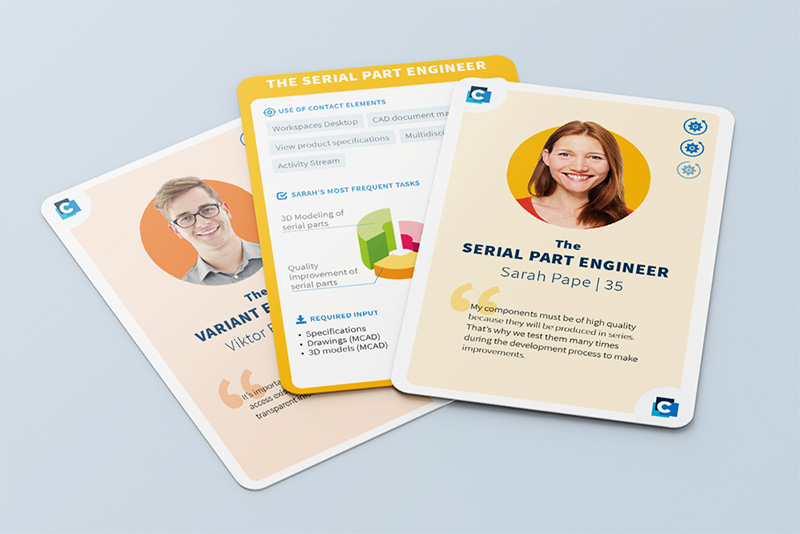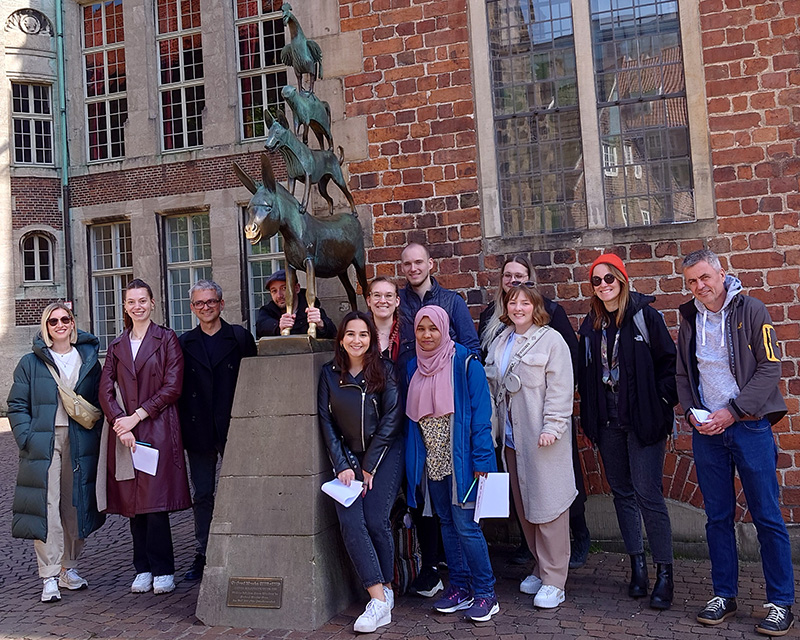
10 years UX team
10 years UX team
From initial icons to a sophisticated design system, and from sporadic project involvement to permanent integration into the development process – UX has evolved into a strategic success factor for CONTACT. As we celebrate its tenth anniversary, we’re looking back at the department’s journey – and forward to the challenges of tomorrow.
User Experience (UX) doesn’t just influence how quickly and precisely users interact with software – it determines whether they use it at all. “A cumbersome user interface can hinder efficiency and cause digital workflows to be bypassed altogether,” says Reiner Schlenker, our current UX Program Manager. He was involved as a freelancer when CONTACT kicked off its first UX projects in 2012. Back then, the focus was mainly on improving individual applications, such as the Activity Stream. “The true genesis of a dedicated UX team came in 2015, when two new colleagues joined me,” Schlenker recalls.
One of them is Vivien Kühne. “Our goal is to truly understand the real working reality of our users. When I came on board, we therefore began with extensive user research in the areas of design and plant engineering,” explains Kühne, now Head of User Experience. Through numerous discussions and workshops, a cornerstone of CONTACT’s current UX work was developed: personas. They help the UX team and other departments understand the diverse requirements that different user roles place on the software.
“One unique aspect of UX for enterprise software is that we have to develop for a multitude of different target audiences simultaneously,” says Christina Kaminski, who joined CONTACT as Product & UX Designer in 2020. “Products for enterprise clients typically cover significantly more complex use cases and processes than those found in the consumer sector.”

UX becomes part of our DNA
Over the next ten years, not only did the team expand – but UX established a crucial role within the company. “We had to do some convincing to integrate UX into the development process from the very beginning,” says Kühne. Today, dedicated UX coaches are assigned to all product programs. They ensure that everyone on the team adopts a user-centric perspective.
A successful user experience is the result of countless feedback and improvement loops. Key tools in this process include mockups and click-through prototypes, which serve as the foundation for conceptualizing, testing, and discussing the behavior of future software. Only when all disciplines – UX, product management, software development, and others – are convinced with the outlined solution does development begin.
A proven feedback format is the Usability Test Lunch. “This is where many different CONTACT colleagues comes together to test new functions and interaction patterns within the software. This gives us authentic feedback from those who weren’t involved in the development,” Kaminski explains. Visits and workshops at customers also provide an excellent opportunity to observe user behavior firsthand. Strategically, the goal is to integrate UX more frequently into customer projects early on.

The focus is on people
At CONTACT, usability follows the philosophy of Human-Centered Design. “People are at the heart of software development,” says Christina Kaminski. “And people are diverse, with varying characteristics, backgrounds, and abilities.” To ensure all users can use CONTACT Elements without restriction, the team has integrated numerous accessibility features, including screen reader compatibility, full keyboard operability, and optimized contrast ratios for better readability. This is a key requirement, especially for customers in the public sector.
To ensure consistent design and interaction patterns within the software, the UX team developed the InSync Design System for the WebUI in 2017. “InSync was a milestone for us,” says Reiner Schlenker. “It defines best practices, standardized design blocks, and rules for their application. This enables not only us, but also our partners and OEMs to develop cohesive interfaces.”

Language is UX, too
Similarly, the team developed the InForm Documentation Framework to establish a standard for documentation. Clear and understandable documentation benefits not only users but also partners who are responsible for the optimal implementation of CONTACT Elements for customers.
In the future, however, users should not have to look up problems in the documentation but receive help directly within the application context. To this end, CONTACT is currently working on seamlessly integrating an AI assistant into the software – with a focus on user experience.
Internationalization, especially in the cloud context, introduces new demands on linguistic elements. “We’re currently establishing automated translation processes for our standard languages, which allows us to integrate them more deeply into the product,” Schlenker states. “In the future, these processes will help us localize our software more rapidly for new markets.”
“It’s crucial to build a shared understanding of usability challenges across the entire company – and to continuously re-evaluate it.”
Reiner Schlenker, UX Program Manager at CONTACT
Which trends will become important?
In recent years, mobile applications have increasingly come into focus. The UX team has already implemented individual mobile use cases, such as documenting service deployments on tablets or smartphones. This year, CONTACT significantly strengthened its expertise in this area with the acquisition of award-winning app developer neusta mobile solutions.
So, what have the UX experts learned over the past decade? “It’s crucial to build a shared understanding of usability challenges across the entire company – and to continuously re-evaluate it,” says Reiner Schlenker. Vivien Kühne’s advice to fellow UX designers is both pragmatic and encouraging: “With every project and every customer, we gain more feedback, and our products are constantly evolving. So, don’t get too attached to your designs – they’re going to change many times.”
